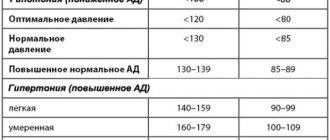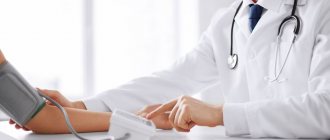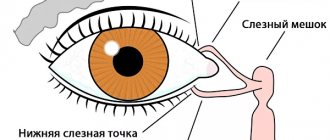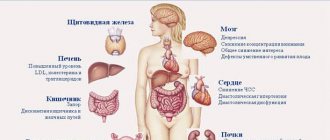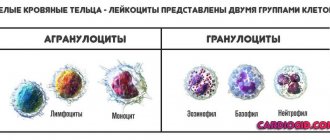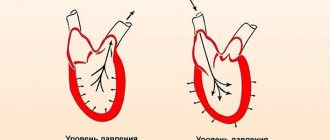Increased blood pressure (BP) is the most common reason for calling emergency medical services (EMS). Deterioration of the condition associated with increased blood pressure accounts for 20-25% of calls for emergency medical services, which amounts to about 9,000,000 calls per year [1-3]. Studies conducted in Moscow showed that the number of emergency calls due to increased blood pressure increases annually [4]. The increase in calls for emergency medical services occurs mainly due to multiple calls to the same patients with a moderate, non-life-threatening increase in blood pressure without the development of a hypertensive crisis (HC) [5]. In most of these cases, the administration of tableted antihypertensive drugs orally or sublingually is usually sufficient to provide EMS [5].
D. Papadopoulos et al. [6] believe that in 76% of cases HA is not life-threatening. The results of the EPOCHA epidemiological study [7] showed that 42.5 million people suffer from arterial hypertension in Russia, and the effectiveness of treatment is 23%, so the incidence of emergency conditions associated with increased blood pressure will remain very high.
It is possible to reduce the number of calls to emergency medical services due to increased blood pressure by prescribing individual self-help programs. Drugs prescribed for self-help must be effective, safe, not cause a large number of undesirable effects, have a method of administration accessible to the patient and an affordable price. By analogy with the planned treatment of arterial hypertension, it can be assumed that combinations of drugs in emergency care are more effective than monotherapy. Self-help drugs should be selected during emergency medical care, so that both the doctor and the patient can be convinced of the effectiveness and good tolerability of the drugs.
Of course, one of the main means for providing emergency medical care and self-help for elevated blood pressure is the imidazoline receptor agonist, moxonidine (physiotens) [8]. The obvious advantages of moxonidine include not only high antihypertensive activity, safety, good tolerability and affordable cost, but also good stability (predictability) of the resulting clinical effect. The second basic drug is captopril (Capoten), which is slightly inferior to moxonidine in duration of action.
The purpose of the study is to improve the results of emergency medical care in cases of high blood pressure and optimize the use of healthcare resources.
Research objectives:
1. To compare the effectiveness of a single sublingual application of combinations of captopril with nifedipine or furosemide and combinations of moxonidine with nifedipine or furosemide when providing emergency medical care to patients with non-life-threatening elevated blood pressure.
2. To compare the frequency of adverse events after a single use of combinations of captopril with nifedipine or furosemide, moxonidine with nifedipine or furosemide when providing emergency medical care to patients with increased blood pressure.
3. Assess the impact of self-help recommendations on the use of emergency medical services in connection with increased blood pressure.
Material and methods
A study of the effectiveness and safety of combinations of antihypertensive drugs was carried out in the emergency department of polyclinic No. 17 - the clinical base of the department of emergency medical care of Northwestern State Medical University named after. I.I. Mechnikov.
The study included patients who applied for emergency medical care due to increased blood pressure without the development of hypertension and patients with uncomplicated hypertension.
The study did not include patients under 18 years of age, patients with life-threatening emergencies, patients with contraindications to any of the 4 medications used, and patients who, before the arrival of the EMS team, took any medications that affect blood pressure.
The study used moxonidine (Physiotens, Abbott), furosemide (Lasix, Aventis, Sanofi), captopril (Capoten, Akrihinn), nifedipine (Cardoflex, Egis).
The effectiveness and safety of combinations of 0.4 mg moxonidine with 10 mg nifedipine were compared; 0.4 mg moxonidine with 40 mg furosemide; 25 mg captopril with 10 mg nifedipine; 25 mg captopril with 40 mg furosemide.
Combinations of drugs were prescribed using a table
Table 1. Characteristics of patients Note: AH—arterial hypertension, HF—heart failure, AMI—acute myocardial infarction, ACVA—acute cerebrovascular accident. random numbers.
A total of 389 patients were included in the study. The vast majority of patients were women (78%). Average age: 70.4±0.6 years. Duration A.G. — 21.5±0.5 years. Initial systolic blood pressure (SBP) was 197.4±0.9 mmHg, diastolic blood pressure (DBP) was 107.5±0.6 mmHg.
Depending on the prescribed combinations of antihypertensive drugs, patients were divided into four groups. The characteristics of patients in the groups are presented in Table. 1.
As can be seen from table. 1, there were no significant differences between the groups for all of the listed characteristics. Blood pressure was measured using the Korotkoff method. In each case, measurements were carried out 2 times, taking into account the minimum values. Registration of A.D. were carried out before prescribing medications and after taking medications every 10 minutes during the first 30 minutes of the study, and longer if indicated.
A reduction in blood pressure of no less than 15%, but no more than 25% of the initial value was considered effective and safe, subject to complete disappearance or significant reduction in the severity of complaints [9, 10].
For the primary assessment of the effectiveness of self-help, we compared the annual number of calls for emergency medical services due to increased blood pressure before patients received self-help recommendations and one year after these recommendations were received. To do this, we conducted a continuous sample of emergency medical service call cards for 500 patients with increased blood pressure. Due to the fact that information about 2 patients was incomplete, these cards were excluded from further processing.
Statistical processing of the results was carried out using the application package Statistica for Windows 8.0.550. Checking the empirical law of distribution of variables showed agreement with the theoretical law of normal distribution according to Shapiro-Wilks ( p
>0.05), therefore, to describe numerical characteristics and quantitative characteristics, the arithmetic mean and the mean square error of the mean were used.
P
was taken as the threshold level of statistical significance [11].
addictive
It has also been noted that even if prescribed correctly, the drug reduces its effectiveness over time. Why is this happening?
It's all about a unique property of the body that allows it to adapt to changing environmental conditions - addiction.
Indeed, at the beginning of taking the medicine, the body reacts as required - the production of hormones that increase blood pressure is inhibited. Over time, the adrenal glands require larger and larger doses of Capoten, as the adapting body begins to produce increasing amounts of the oligopeptide. This is the addictive effect.
With improper treatment, a situation is possible when the body finally integrates the drug into its metabolism, adapting even to its ultra-high doses. This can lead to problems if there is a need to quickly reduce blood pressure - such an organism may react incorrectly to strong drugs. In addition, addiction makes it more difficult to quit the drug. So, if Capoten does not reduce blood pressure, what should the patient do?
Increasing the dosage of the drug on your own is dangerous!
Results and discussion
The effectiveness of combinations of antihypertensive drugs is presented in table. 2.
Table 2. Efficacy of antihypertensive drugs
As can be seen from table. 2, combinations of moxonidine with nifedipine, moxonidine with furosemide, and captopril with furosemide were very highly effective. In contrast, the addition of nifedipine to captopril resulted in a sharp decrease in antihypertensive activity.
The absence of increased antihypertensive activity when adding amlodipine to captopril is also indicated by P. Kotruchin et al. [12].
Changes in blood pressure 30 minutes after taking the studied combinations of antihypertensive drugs are presented in the figure.
Decrease in systolic (a) and diastolic blood pressure (b) after taking antihypertensive drugs. 1 — moxonidine with nifedipine; 2 — moxonidine with furosemide; 3 — captopril with nifedipine; 4 — captopril with furosemide.
Combinations of moxonidine with nifedipine, moxonidine with furosemide and captopril with furosemide have pronounced antihypertensive activity (see figure). SBP is more significantly reduced by the combination of moxonidine with furosemide, and DBP by the combination of moxonidine or captopril with furosemide.
The combination of captopril with nifedipine for emergency antihypertensive therapy is ineffective.
In table 3 presented
Table 3. Adverse events of antihypertensive drugs - undesirable effects of the studied combinations of antihypertensive drugs.
As can be seen from table. 3, the least number of adverse events occurred when using a combination of moxonidine with furosemide, the maximum number of side effects was noted when captopril was prescribed with nifedipine.
As a result of the analysis of 498 emergency medical service call cards for patients with elevated blood pressure, it was found that initially during the year they called for emergency medical services 1724 times, i.e., there were 3.5 calls per patient per year. After receiving recommendations for self-help, more than half (279 out of 498) of patients with increased blood pressure did not call for emergency medical services within a year. The remaining 219 patients visited the emergency room for this issue 656 times during the year, i.e., the number of calls per patient decreased from 3.5 to 3.0 per year.
On average, the introduction of individual recommendations for self-help reduced the use of emergency medical services in connection with an increase in blood pressure from 1724 to 656 per year, i.e. by 2.6 times, without requiring additional funding.
The high incidence of arterial hypertension, the low effectiveness of its treatment, the round-the-clock availability of emergency medical services, together with the dependent attitude of patients towards their disease, are realized by the very high demand for emergency medical services at the slightest increase in blood pressure.
The increasing number of calls depletes the resources of the ambulance service and healthcare in general, not improving the course and outcome of the disease, but contributing to the transformation of a medical problem into a social problem.
Solving this problem is impossible without the cooperation of the doctor and the patient with arterial hypertension, in particular without the active use of self-help. Combinations of drugs for self-help should be selected during emergency medical care, so that both the doctor and the patient can be convinced of the effectiveness and good tolerability of the drugs.
When using self-help, you should adhere to the rules, the main ones of which are presented below.
Basic rules of self-help
1. Self-help is indicated for a typical deterioration of the patient’s condition, in particular for a typical increase in blood pressure.
2. The doctor must make sure that the patient correctly understands the content of self-help and is able to correctly follow the specified recommendations.
3. If, after taking the recommended medications, your health and condition do not improve or worsen, it is necessary, without wasting time, to call an ambulance.
4. Self-help should not replace planned therapy.
5. Self-help should not be prescribed to patients who are unable to adequately assess and control their condition.
Not a universal cure
Of course, like any other remedy, Capoten is intended to correct strictly defined malfunctions in the body that arise for specific reasons. But there are many reasons for the occurrence of high blood pressure, and, in most cases, unfortunately, it is not possible to identify the specific cause and immediately select the most effective medicine.
For example, Capoten will not help if the pressure is caused by:
- disease of internal organs not related to the cardiovascular system. Hypertension can be caused by renal nephrosis, ulcerative lesions of the gastrointestinal tract, and adrenal dysfunction. In all these cases, this medicine will not help;
- increased heart rate . The medicine does not affect the heart muscle and does not change the number of contractions of this organ. Therefore, rapid heartbeat with high blood pressure is a reason to refuse to take Capoten in favor of other medications;
- stressful situation . After all, the body of a person who finds himself in such a situation intensively produces adrenaline, which acts differently than the oligopeptide - it increases pressure by affecting the heart muscle and constricting blood vessels throughout the body, except for the brain and heart. So the effect of the active substance of the drug in such a situation will not be able to reduce blood pressure.
Only a doctor can prescribe Capoten!
The main rule in the treatment of hypertension
The main rule when treating hypertension is not to listen to the advice of friends, neighbors or relatives who are already taking any medications to treat this disease!
The choice of drug for the treatment of arterial hypertension is the prerogative of the doctor.
It takes into account the clinical picture of a particular patient, his concomitant diseases, side effects of the drug and its mechanism of action, contraindications of a particular drug. All patients are different, and each requires an individual approach. What suits one person will not always suit another. Only a doctor can prescribe, cancel or replace a drug.
If efficiency decreases
First of all, you should not immediately stop taking the medicine. This step is justified only if taking it leads to serious negative health consequences.
The so-called withdrawal syndrome can be very dangerous for a person who has been taking Capoten for a long time.
Abrupt refusal to take it can lead to unpredictable consequences of varying severity. Everything here is strictly individual.
One patient's blood pressure may rise significantly, leading to a hypertensive crisis. Another, on the contrary, will react with a dangerous decrease in pressure, or even disturbances in the functioning of the heart and blood vessels. Failure to take the drug can also lead to a heart attack or stroke.
Therefore, only a doctor can recommend stopping taking Capoten. He will also develop the correct regimen for stopping the drug, which will boil down to a gradual reduction in dosage.
Often, when the dose of Capoten is reduced, another drug that controls blood pressure, or even a group of such drugs, is gradually introduced.
The practice of alternating medications is also quite common. For example, Capoten can alternate with drugs - diuretics or blockers.
If taking such medications is undesirable due to individual contraindications, Capoten is combined with another drug of the same group - Captopril.
In more than half of the cases, it is the alternation of these two drugs that provides a qualified answer to the question “Capoten does not help, what should I do?”
Treatment with Capoten requires maximum regularity - missing even one dose can significantly reduce the effectiveness of the entire course.
Release form, pharmacokinetics
Capoten is available in the form of tablets of 25 mg or 50 mg. The package may contain 28, 40, 56 tablets (10 or 14 in one cellular blister).
The active component of the antihypertensive drug is captopril. It is an ACE inhibitor (angiotensin-converting enzyme) that suppresses the formation of angiotensin II.
In addition to captopril, the drug also contains auxiliary ingredients. These are corn starch, lactose, stearic acid, MCC.
Medicines from this pharmacological group have a vasoconstrictor effect on both arterial and venous vessels. Capoten lowers pressure in the pulmonary circulation, as well as in the right atrium, reduces post- and preload, and reduces the release of aldosterone in the adrenal glands.
No ads 1
